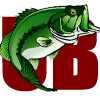Picking the Perfect Prop by Laurie Cork
Started by MotherNature, February 24, 2019, 04:19:03 PM
Previous topic - Next topic0 Members and 1 Guest are viewing this topic.
Go Down
Pages1
Go Up
Pages1
User actions
